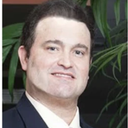Posted underJuvederm q&a
Can You Have Juvederm Injected Between the Eyebrows and Above the Eye Brown?
I have used botox and disport for deep wrinkles between my eye brows and right above my eye brow. However, these don't seem to do anything to improve the wrinkles. It has been recommended that I now use juvederm. However, I had a nurse friend of mine tell me to never, ever use juvederm in this area of the face. I'm confused as what I should do. Please advise.
Answers (14)
From board-certified doctors and trusted medical professionals

Dr. Nelson Lee Novick, MD
Dermatologic Surgeon, Board Certified in Dermatology
Answer
Dr. William P. Mack, MD
Oculoplastic Surgeon, Board Certified in Ophthalmology
Answer
Dr. Benjamin Barankin, MD, FRCPC
Dermatologic Surgeon, Certified in Dermatology
Answer
More Juvederm Questions
See all Juvederm Q&AWE SEND PRETTY
EMAILS
What’s trending? Who’s turning heads? Which TikTok myths need busting? We’ve got you. No fluff, no gatekeeping—just real talk. Get our free, unfiltered newsletter.





